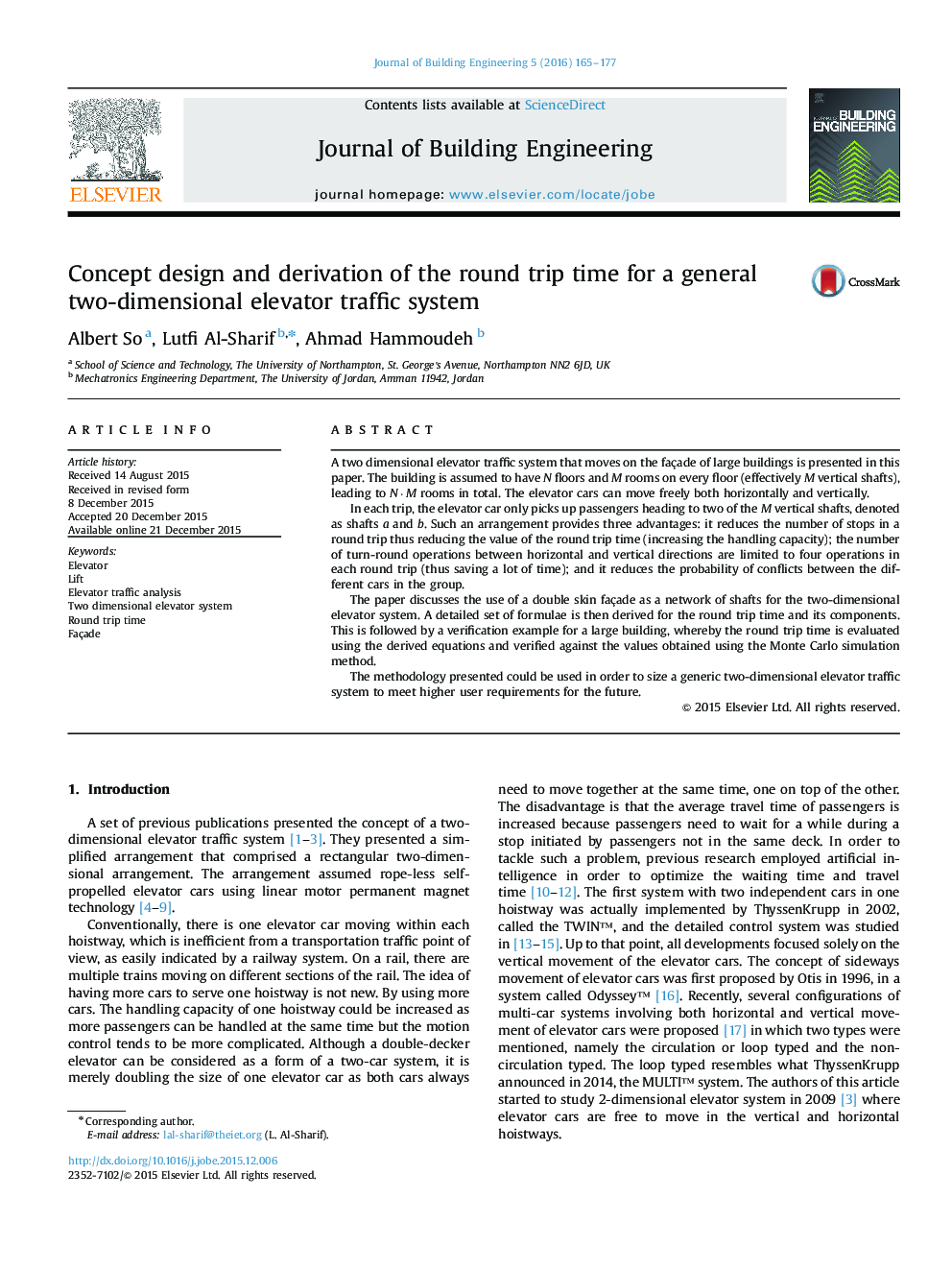| Article ID | Journal | Published Year | Pages | File Type |
|---|---|---|---|---|
| 283846 | Journal of Building Engineering | 2016 | 13 Pages |
•Two dimensional traffic systems reduce time to destination.•They can be integrated into the building façade.•They rely heavily on the new linear motor technology.•New analytical formula for the round trip time derived and verified.
A two dimensional elevator traffic system that moves on the façade of large buildings is presented in this paper. The building is assumed to have N floors and M rooms on every floor (effectively M vertical shafts), leading to N·M rooms in total. The elevator cars can move freely both horizontally and vertically.In each trip, the elevator car only picks up passengers heading to two of the M vertical shafts, denoted as shafts a and b. Such an arrangement provides three advantages: it reduces the number of stops in a round trip thus reducing the value of the round trip time (increasing the handling capacity); the number of turn-round operations between horizontal and vertical directions are limited to four operations in each round trip (thus saving a lot of time); and it reduces the probability of conflicts between the different cars in the group.The paper discusses the use of a double skin façade as a network of shafts for the two-dimensional elevator system. A detailed set of formulae is then derived for the round trip time and its components. This is followed by a verification example for a large building, whereby the round trip time is evaluated using the derived equations and verified against the values obtained using the Monte Carlo simulation method.The methodology presented could be used in order to size a generic two-dimensional elevator traffic system to meet higher user requirements for the future.
